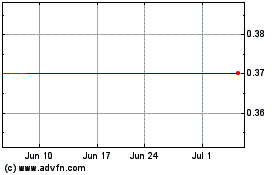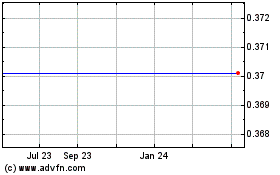More Factories Crop Up Closer to Customers -- 2nd Update
November 06 2018 - 7:31PM
Dow Jones News
By Austen Hufford
The largest share of manufacturers in at least a decade is
spending to expand facilities, as companies look to build plants
closer to their customers to offset record-high trucking costs and
seek out pockets of available workers in a tight labor market.
Twelve percent of U.S. manufacturers that invested in added
capacity at domestic factories in the second quarter did so through
building expansions, according to the Census Bureau, the highest
proportion in the decade that metric has been released.
Manufacturing construction spending hit a 16-month high in
September, according to the Census Bureau. Executives are making
some of those investments in new factories to alleviate rising
transport bills and supply-chain bottlenecks.
Ferrellgas Partners LP added two plants in recent months to make
and refill its Blue Rhino propane tanks closer to customers. The
new factories in Alabama and California will allow the company to
cut over a dozen delivery routes and lower costs by as much as $3
million annually.
"The freight savings is so extraordinary," said Paul Haeder,
Blue Rhino's director of production.
The number of U.S. factories where executives said material
shortages and logistics problems were limiting output was also the
highest in a decade in the second quarter, the Census Bureau
said.
The Census Bureau surveys factories across the U.S., asking them
questions such as why has capacity increased and why is production
below that capacity.
Italian tissue-paper maker Sofidel Group opened its sixth U.S.
plant in Circleville, Ohio, in October. It plans to open another in
Oklahoma in 2020, and said it might add a few more elsewhere in the
U.S., to make its products as close to customers as possible to
speed up delivery times and cut logistics costs.
"Our products are very light in weight and very bulky," Chief
Executive Luigi Lazzareschi said. He added that Sofidel tries to
keep its U.S. transportation journeys to below 700 miles.
The expansion comes as unemployment is at the lowest point in
nearly half a century. Manufacturing payrolls rose by 32,000
workers in October, the biggest monthly increase this year.
Consumer confidence and wages are rising, and many companies are
counteracting higher costs by raising prices on the expectation
that consumers are willing to pay more as the economy charges
ahead.
Expanding in a strong economy has its risks. Operating multiple
factories or warehouses increases the amount of inventory needed to
fulfill the same amount of demand, according to logistics experts,
which increases costs. While companies benefit from solid demand
for their goods, it also can lead to higher interest rates. A
rising rate environment causes loans for building to be more
expensive and inventory becomes more costly compared to cash.
"A strong economy could both be a blessing and a curse," said
Yemisi Bolumole, a supply-chain management professor at Michigan
State University.
Instead of building factories, some manufacturers are making
investments and strengthening supply chains to existing plants.
Travel-trailer-maker Airstream, owned by Thor Industries Inc.,
broke ground in August on a $40 million factory adjacent to its
existing plant in Jackson Center, Ohio. That plant had fallen short
of demand for three years.
Airstream CEO Bob Wheeler said the company thought about
building a plant in the Western U.S., near many of its customers,
but decided against it. "We just didn't have any confidence we
could recreate the workforce," he said.
Companies building plants nearer to customers say the investment
costs can be made up in faster turnaround times and increased
orders.
Andersen Corp., a Minnesota-based maker of windows and patio
doors, said in September that it would invest over $105 million in
a new plant near Phoenix, to capitalize on the increased
concentration of customers, suppliers and available workers
there.
"One of the important parts of our business is being close to
our customers," said Chris Galvin, Andersen's head of manufacturing
and logistics.
Some companies also are trying to source more parts locally to
mitigate the impact of U.S. tariffs on some foreign goods, said
executives at Flex Ltd., which makes and ships products --
including shoes and personal electronics -- for other
companies.
"Globalization is becoming regionalization, and regionalization
is becoming intra-national," said Tom Linton, Flex's supply-chain
officer.
Write to Austen Hufford at austen.hufford@wsj.com
(END) Dow Jones Newswires
November 06, 2018 19:16 ET (00:16 GMT)
Copyright (c) 2018 Dow Jones & Company, Inc.
Ferrellgas Partners (NYSE:FGP)
Historical Stock Chart
From Mar 2024 to Apr 2024

Ferrellgas Partners (NYSE:FGP)
Historical Stock Chart
From Apr 2023 to Apr 2024
